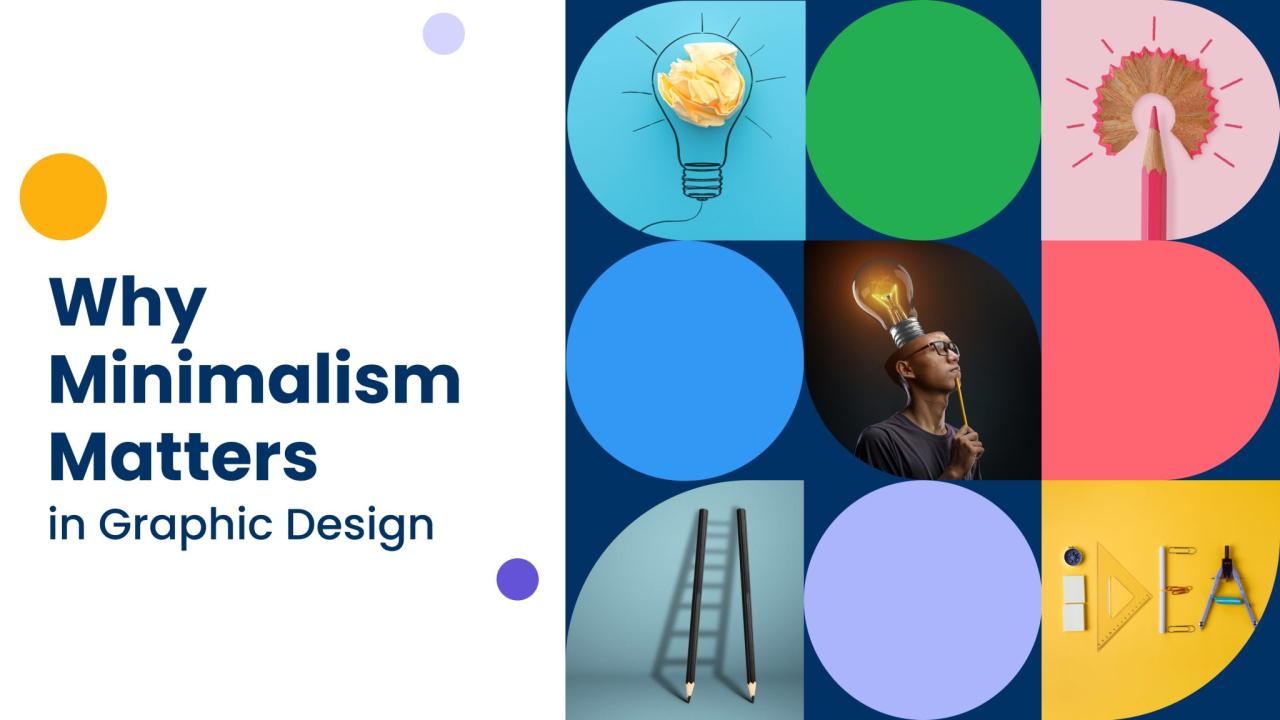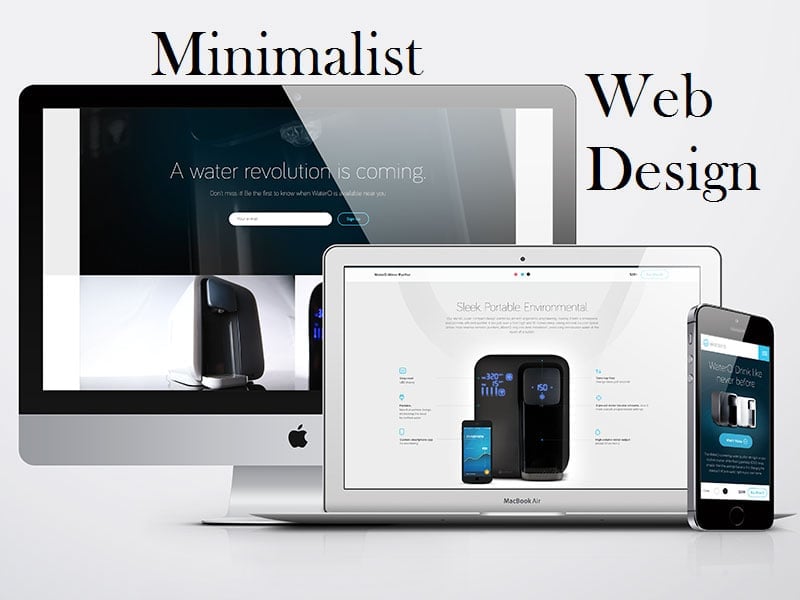In the bustling, information-saturated digital landscape of the 21st century, a quiet revolution has taken hold. The era of cluttered, flashy, and overwhelming websites is receding into the past, making way for an era of clarity, purpose, and serene functionality. This is the era of minimalist design. More than just a fleeting trend, minimalist design has firmly established itself as the dominant aesthetic philosophy for successful websites, apps, and digital products. Its ascendancy isn’t merely about looking stylish; it’s a profound response to user behavior, technological necessity, and psychological principles. This deep dive will explore the core tenets of minimalist design, unravel the reasons behind its overwhelming dominance, and provide a practical blueprint for implementing its principles to enhance user experience (UX), boost Search Engine Optimization (SEO), and ultimately, maximize engagement and revenue potential for platforms like Google AdSense.
The Core Philosophy: Less is More, But More Strategic
Minimalism, as an art movement, began in post-World War II Western art, most strongly with American visual arts in the 1960s and early 1970s. Pioneers like Donald Judd and Frank Stella championed work that was stripped down to its most fundamental features. This philosophy migrated seamlessly into the digital realm. At its heart, minimalist web design is not about removing things for the sake of being bare; it’s about distilling an interface down to its absolute essentials. Every pixel, every word, and every button must serve a deliberate purpose. The goal is to eliminate any element that does not contribute to the core message or function, thereby creating a space where that message can resonate with unparalleled power and clarity. It’s the digital equivalent of a calm, well-organized room versus a chaotic, cluttered attic. Users instinctively prefer and perform better in the former.
A. The Pillars of Minimalist Web Design: A Deconstructed Look
To understand its dominance, one must first understand its components. Minimalist design is built upon several key pillars that work in concert to create a cohesive and effective user experience.
A. Negative Space (or White Space): This is arguably the most critical element. Negative space is the empty area between and around elements. It is not merely “blank” space; it is active space that gives content room to breathe. It guides the user’s eye, creates a hierarchy of information, and prevents cognitive overload. Ample negative space signifies sophistication, clarity, and importance, directing focus precisely where you want it.
B. Bold and Purposeful Typography: With visual clutter eliminated, typography takes center stage as a primary design element. Minimalist sites often use strong, clean typefaces. The text becomes more than just a vessel for information; it becomes part of the visual identity. Careful attention is paid to font pairing, sizing, weight, and spacing (kerning and leading) to create rhythm, establish contrast, and ensure effortless readability across all devices.
C. A Limited and Intentional Color Palette: While early web design often used a rainbow of colors, minimalism favors restraint. Color palettes are typically monochromatic, analogous, or consist of one or two accent colors against a neutral background (often white, black, or grey). This restraint makes the chosen colors more impactful. A single, bold accent color for call-to-action (CTA) buttons, for instance, becomes impossible to miss, dramatically increasing conversion rates.
D. Dramatic Imagery and Purposeful Graphics: When you use fewer images, each one carries more weight. Minimalist design favors high-quality, impactful photography, bold illustrations, or subtle textural backgrounds. Every graphic must be intentional and directly supportive of the content. The trend of using large, full-screen hero images with overlaid text is a direct result of minimalist influence, creating an immediate and immersive visual statement.
E. Flat Design and Textured Minimalism: The minimalist movement largely did away with skeuomorphism (design that mimics real-life objects, like a notebook-looking app with leather stitching). In its place emerged flat design, which uses clean, two-dimensional elements with no drop shadows, gradients, or bevels. This reduces visual complexity and loads faster. Recently, this has evolved into “textured minimalism” or “minimalism 2.0,” which incorporates subtle elements like micro-shadows, gradients, and muted textures to add depth and warmth without returning to clutter.
F. Hidden Navigation (Hamburger Menus and Beyond): To maximize screen real estate and reduce visual noise, minimalist sites often tuck primary navigation away behind a recognizable hamburger menu (the three-line icon). This forces a prioritization of content and creates a cleaner interface. However, this must be implemented carefully, as hiding key navigation can sometimes harm discoverability, requiring excellent information architecture.
B. The Unbeatable Advantages: Why Minimalism is a Powerhouse
The dominance of minimalist design is not an artistic whim; it is driven by concrete, measurable benefits that align perfectly with the goals of modern businesses and content creators.
A. Enhanced User Experience (UX) and Usability: A clean, uncluttered interface is inherently easier to use. Users are not confused by competing elements or overwhelmed by choices. The path to their goal whether it’s reading an article, signing up for a newsletter, or making a purchase is clear and unobstructed. This reduces frustration, decreases bounce rates, and increases the time users spend on your site a key metric for both engagement and AdSense.
B. Lightning-Fast Loading Speeds: This is a non-negotiable factor in today’s world. Google’s algorithm heavily favors websites that load quickly, especially on mobile devices. Minimalist design, by its very nature, is lightweight. Fewer images, simplified code, and a lack of bulky widgets mean pages render in a fraction of the time. A faster site directly improves SEO rankings, reduces abandonment, and creates a seamless user experience.
C. Flawless Mobile Responsiveness: With over half of all global web traffic coming from mobile devices, a design that translates beautifully to small screens is essential. Minimalist layouts, with their simple structures and fluid use of space, are inherently easier to make responsive. They adapt gracefully from a large desktop monitor to a smartphone screen without breaking or becoming unusable, ensuring a consistent brand experience for every user.
D. Superior Conversion Rate Optimization (CRO): By stripping away distractions, minimalist design funnels the user’s attention toward your primary goal, your Call to Action (CTA). A brightly colored “Buy Now” or “Subscribe” button on a clean background has no competition. This visual hierarchy is a powerful tool for guiding user behavior and significantly boosting conversion rates, turning casual visitors into customers, subscribers, or leads.
E. Stronger Brand Communication and Perception: Minimalism exudes confidence. It says that a brand is so secure in its value proposition that it doesn’t need flashy gimmicks to attract attention. It communicates sophistication, elegance, and clarity. This builds trust with the audience and creates a memorable, timeless brand identity that doesn’t need constant redesigns to stay relevant.
F. Future-Proofing and Easier Maintenance: Trends in web design come and go, but the core principles of clarity and function are perpetual. A minimalist website is less likely to feel dated in a few years. Furthermore, from a development and content management perspective, a simpler site is easier to update, troubleshoot, and maintain, saving time and resources in the long run.
C. The Critical SEO and Google AdSense Connection
For content creators and publishers, the appeal of minimalism is particularly strong due to its direct positive impact on revenue generation through platforms like Google AdSense.
A. SEO Synergy: Google’s algorithms are designed to reward websites that provide the best possible user experience. Key ranking factors where minimalism excels include:
-
Page Speed: As mentioned, minimalist sites are fast, a direct ranking factor.
-
Low Bounce Rate: A clean, relevant, and easy-to-use site encourages users to stay longer and explore more pages, signaling to Google that your content is valuable.
-
Mobile-First Indexing: Google primarily uses the mobile version of a site for indexing and ranking. Minimalism’s mobile-friendly nature is a huge advantage.
-
Clean Code: Simplified HTML and CSS are easier for search engine crawlers to read and index, potentially leading to better content comprehension.
B. Maximizing AdSense Revenue: While it may seem counterintuitive (fewer elements meaning fewer ad spots?), minimalism actually enhances AdSense performance.
-
Higher Viewability and Click-Through Rates (CTR): Ads placed on a clean, focused page are far more visible. Users are not blinded by a barrage of content and flashing banners. A well-placed, relevant ad in a spacious layout has a much higher chance of being seen and clicked.
-
Premium Ad Placements: AdSense algorithms can better interpret a clean page layout, often resulting in better-matched, higher-paying ads. A site that looks professional and trustworthy is more attractive to premium advertisers.
-
User Retention: A good experience means users return. Returning users generate more pageviews over time, which translates to more ad impressions and more potential revenue.
D. Implementing Minimalism: A Practical Guide for Your Site
Adopting a minimalist approach requires careful thought and strategy. It is not simply a matter of deletion.
A. Conduct a Content Audit: ruthlessly analyze every element on your key pages. For each image, widget, line of text, and button, ask: “Does this element serve a vital purpose? Does it help the user achieve their goal or understand my message?” If the answer is no, remove it.
B. Embrace a Visual Hierarchy: Use size, color, and spacing to tell users what to look at first, second, and third. Your headline should be the most prominent element, followed by supporting text, and finally your CTA. This visual guide is essential for a frictionless experience.
C. Choose Your Colors and Fonts with Intent: Select a palette of 2-3 colors maximum. Choose 2 complementary fonts often one expressive font for headlines and a highly readable sans-serif for body text. Consistency is key to maintaining a clean look.
D. Prioritize Your Navigation: Don’t hide important links for the sake of minimalism. Use analytics to determine your most important pages and make those links accessible. The hamburger menu is perfect for secondary links, but primary navigation might deserve a spot on the main screen.
E. Optimize All Media: Ensure every image is compressed and saved in a modern format like WebP without sacrificing quality. Implement lazy loading so images only load as the user scrolls to them, further boosting speed.
F. Test Relentlessly: Use A/B testing tools to experiment with different layouts, CTA placements, and color schemes. What feels minimal and clear to you might be confusing to a new user. Data-driven decisions will help you find the perfect balance between minimalism and functionality.
Conclusion: The Enduring Reign of Clarity
Minimalist design dominates because it is a philosophy that prioritizes the human on the other side of the screen. It is a respectful acknowledgment that users’ time and attention are their most valuable commodities. By delivering content and functionality in the most efficient, aesthetically pleasing, and distraction-free manner possible, minimalist websites build trust, foster engagement, and drive action. Its synergy with the technical demands of SEO and the economic model of advertising platforms like Google AdSense makes it not just an artistic choice, but a shrewd business strategy. In the endless noise of the internet, a minimalist website is a clear, confident, and powerful voice. And that is a voice that people will always stop to listen to.














